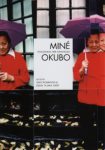Book Description from Back CoverThis is the first book-length critical examination of the life and work of Miné Okubo (1912-2001), a pioneering Nisei artist, writer, and social activist. Okubo's landmark Citizen 13660 (first published in 1946) is the first and arguably best-known autobiographical narrative of the wartime Japanese American relocation and confinement experience.Born in Riverside, California, Okubo was incarcerated by the U.S. government during World War II, first at the Tanforan Assembly Center in California and later at the Topaz War Relocation Center in Utah. There she taught art and directed the production of a literary and art magazine. While in camp, Okubo documented her confinement by making hundreds of paintings and pen-and-ink sketches. These provided the material for Citizen 13660. Word of her talent spread to Fortune magazine, which hired her as an illustrator. Under the magazine's auspices, she was able to leave the camp and relocate to New York City, where she pursued her art over the next half-century. Miné Okubo expands the sparse critical literature on Asian American women, as well as that on the Asian American experience in the eastern United States. It serves as an excellent companion to Citizen 13660, providing critical tools and background to place Okubo's work in its historical and literary contexts. Background on Greg Robinson and Elena Tajima CreefGreg Robinson is associate professor of history at the Université du Québec À Montréal. Elena Tajima Creef is associate professor of women's studies at Wellesley College. |
|||
|
About | Contact | New | Specials | Browsing | Ordering | Conference | Links | Help Copyright © 2009 by AACP, Inc. Most recent revision May 28, 2009 |
|||




